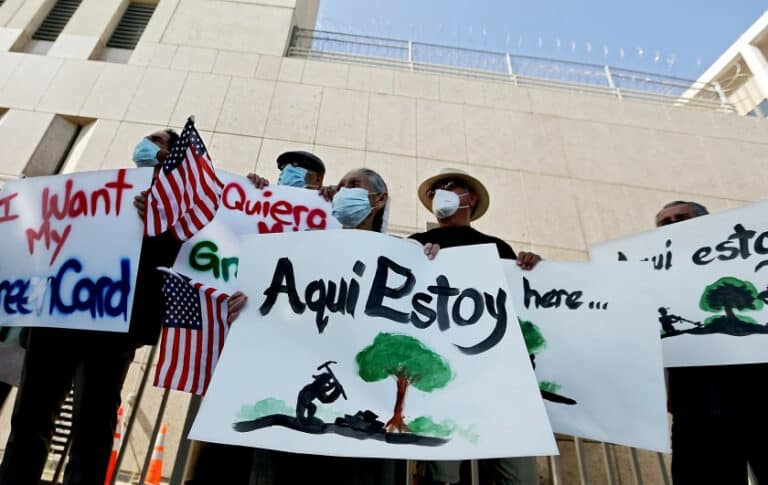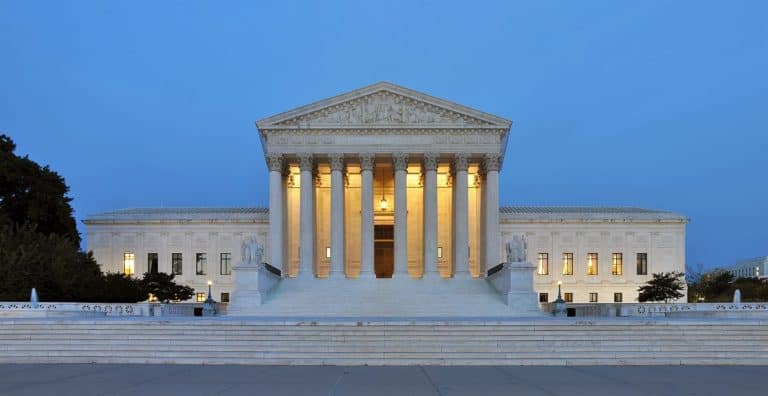Jack Goldsmith is the Learned Hand Professor of Law at Harvard Law School, where he teaches and writes about national security law, international law, internet law, and, recently, labor history. Before coming to Harvard, Professor Goldsmith served as Assistant Attorney General, Office of Legal Counsel from 2003-2004, and Special Counsel to the Department of Defense from 2002-2003.
In a post published in August (and republished in November), I expressed puzzlement about the Supreme Court’s grant of certiorari in Mulhall. “I am beginning to think that the procedural hurdles to affirmance are so great that the grant might have been imprudent,” I argued, because the case is possibly moot, because there is no obvious private right of action in the case, and because of a possible Iqbal pleading problem. “[P]erhaps [the Court] will dismiss the case as improvidently granted,” I speculated. In September we noted that Thomas Frampton had identified a fourth potential procedural problem in the case – standing. Ben additionally noted that Mulhall was an odd case because the Plaintiff-Respondent’s position in the case amounted to the admission of a felony.
In a Per Curiam opinion, the Supreme Court today dismissed Mulhall as improvidently granted. The Court provided no reasoning for its dismissal, but Justice Breyer (joined by Justices Sotomayor and Kagan) suggested that the reasons were that the case is possibly moot and that Respondent Mulhall possibly lacked standing, and also suggested (and sought briefing on the proposition) that Section 302 should not be viewed to create a private cause of action.
Two quick reactions, perhaps more later.
First, Justice Breyer notes that the dismissal of Mulhall leaves CA11’s opinion in place, and that decision “raises the specter that an employer or union official could be found guilty of a crime that carries a 5-year maximum sentence, see 29 U. S. C. §186(d), if the employer or union official is found to have made certain commonplace organizing assistance agreements with the intent to ‘corrupt’ or ‘extort.’” I don’t think this last part is quite right, at least in the short term, since it is inconceivable that the Obama administration would prosecute under CA11’s theory. However, as long as CA11’s decision stands, the specter of expensive and difficult litigation will hover over neutrality/bargaining agreements in many circuits, and will indeed chill the making of those agreements. This is perhaps why Justice Breyer argued that further briefing rather than dismissal was warranted. This gambit by Justice Breyer is interesting, for it might suggest some confidence that the merits of the decision would have gone labor’s way. Otherwise, I do not think he would have argued for further briefing on the procedural issues in an attempt to reach the merits. This possible implication, I think, is the big news of the dismissal (besides, of course, the dismissal itself).
Second, why did the Court grant a case with so many problems, and why did it dismiss? No way to know, of course, but here is a guess. UNITE HERE’s cert. petition made it seem like the sky was falling for labor, which the left side of the Court cares about, and then Respondent agreed that certiorari was warranted and made the case seem ultimately to be about employee coercion, which the right side of the Court cares about (but which I do not think is really at stake in the case). Perhaps this unusual posture, plus a thin though new-ish split in the circuits, plus some poor cert.-pool work by the Justices’ law clerks, led the Court to overlook the obvious procedural and factual problems in the case that would have normally argued against a grant. And then once the Court confronted the merits, which raised quite knotty problems of statutory construction, these procedural problems loomed larger and offered an easy way out.






Daily News & Commentary
Start your day with our roundup of the latest labor developments. See all
July 4
The DOL scraps a Biden-era proposed rule to end subminimum wages for disabled workers; millions will lose access to Medicaid and SNAP due to new proof of work requirements; and states step up in the noncompete policy space.
July 3
California compromises with unions on housing; 11th Circuit rules against transgender teacher; Harvard removes hundreds from grad student union.
July 2
Block, Nanda, and Nayak argue that the NLRA is under attack, harming democracy; the EEOC files a motion to dismiss a lawsuit brought by former EEOC Commissioner Jocelyn Samuels; and SEIU Local 1000 strikes an agreement with the State of California to delay the state's return-to-office executive order for state workers.
July 1
In today’s news and commentary, the Department of Labor proposes to roll back minimum wage and overtime protections for home care workers, a federal judge dismissed a lawsuit by public defenders over a union’s Gaza statements, and Philadelphia’s largest municipal union is on strike for first time in nearly 40 years. On Monday, the U.S. […]
June 30
Antidiscrimination scholars question McDonnell Douglas, George Washington University Hospital bargained in bad faith, and NY regulators defend LPA dispensary law.
June 29
In today’s news and commentary, Trump v. CASA restricts nationwide injunctions, a preliminary injunction continues to stop DOL from shutting down Job Corps, and the minimum wage is set to rise in multiple cities and states. On Friday, the Supreme Court held in Trump v. CASA that universal injunctions “likely exceed the equitable authority that […]